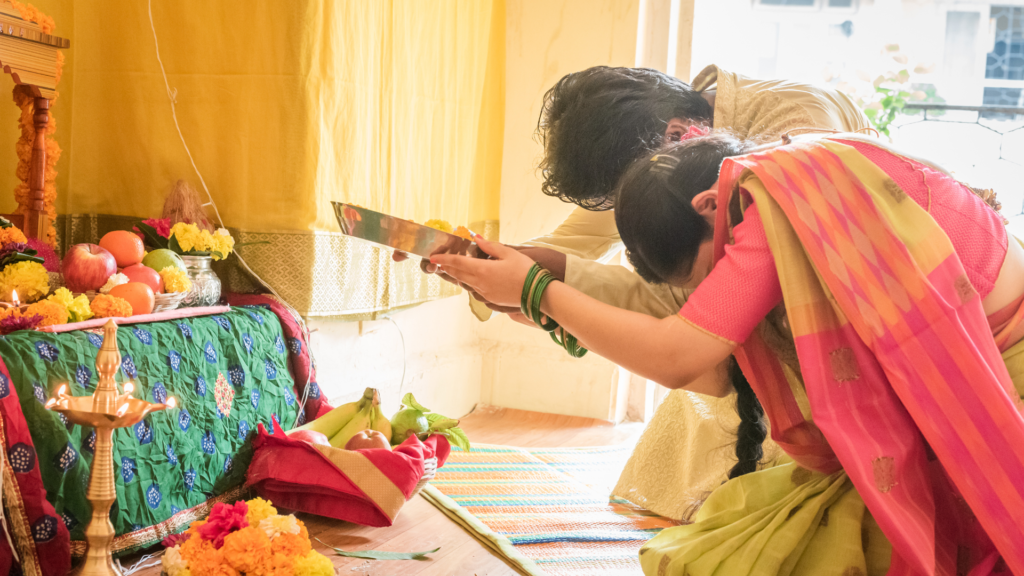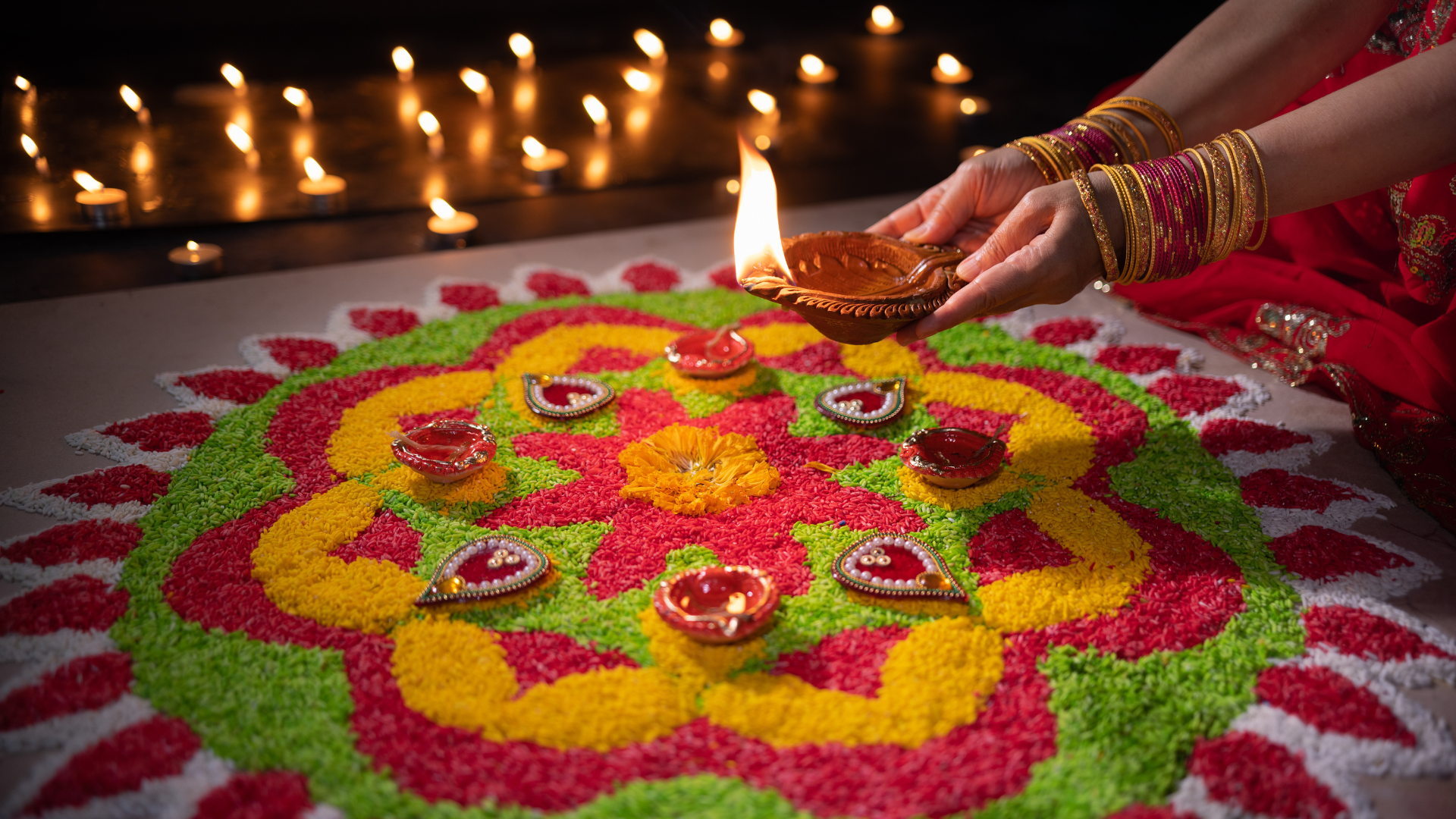In Hindu customs and rituals, especially during home poojas, adhering to specific practices is crucial. One common query that often arises is whether to sit or stand during worship. Let’s explore the significance of sitting and the correct method of worshiping God.

Sitting Significance:
In Hindu beliefs, standing during pooja is considered inauspicious. Worshiping God while standing may not yield the desired results. It’s recommended to sit on an asana (mat) during the pooja. Place the asana on the floor and sit on it while performing the rituals.
Covering the Head:
Another crucial aspect of pooja is to cover the head. Both men and women should wear a cloth on their heads while worshiping. It’s a mark of respect and devotion to the divine.
Guidelines for Performing Pooja:
- Placement: Follow Vastu Shastra guidelines, facing east or north during pooja. Items like the bell, incense, lamp, and essentials on the right side are considered favorable, bringing blessings of peace, prosperity, and good health.
- Forehead Tilak: Apply a tilak on the forehead during pooja, signifying devotion and reverence. Avoid worshiping with a bare or bald forehead.
When constructing a Dedicated Pooja Room, consider these guidelines:
- Location: The ideal position is in the northeast direction, bringing peace, wealth, and happiness.
- Dimensions: The pooja room’s size should be proportional, with the width ideally twice the height.
Avoiding Inauspicious Locations:
- Toilet Proximity: Ensure no toilet is above, below, or adjacent to the pooja room.
- Under Stairs: Avoid building a pooja room beneath the staircase, respecting the sanctity of the space.
By following these rituals and guidelines, create a sacred space for worship, ensuring your pooja is performed with utmost reverence. May your devotion bring you closer to the divine blessings you seek.
